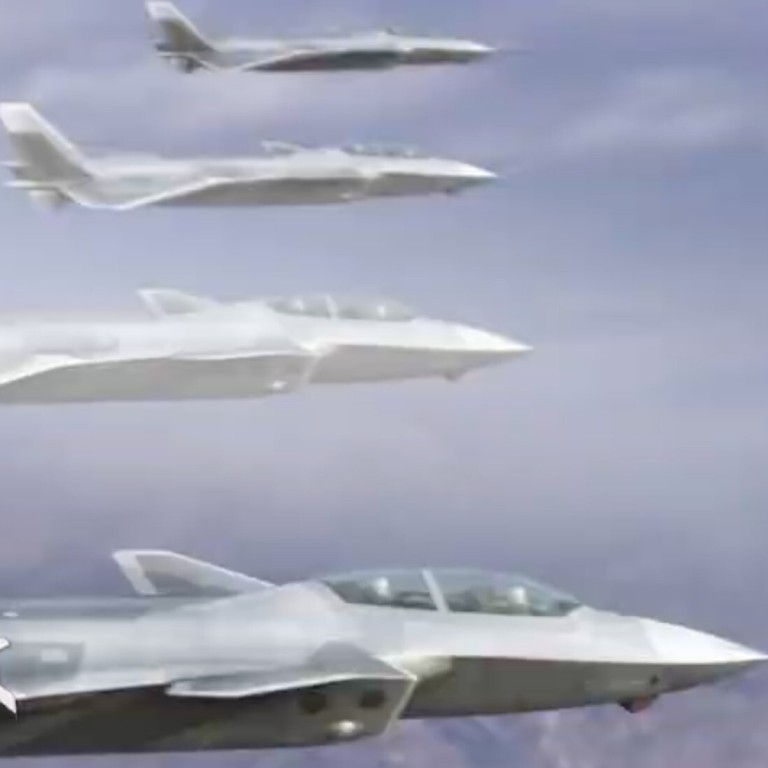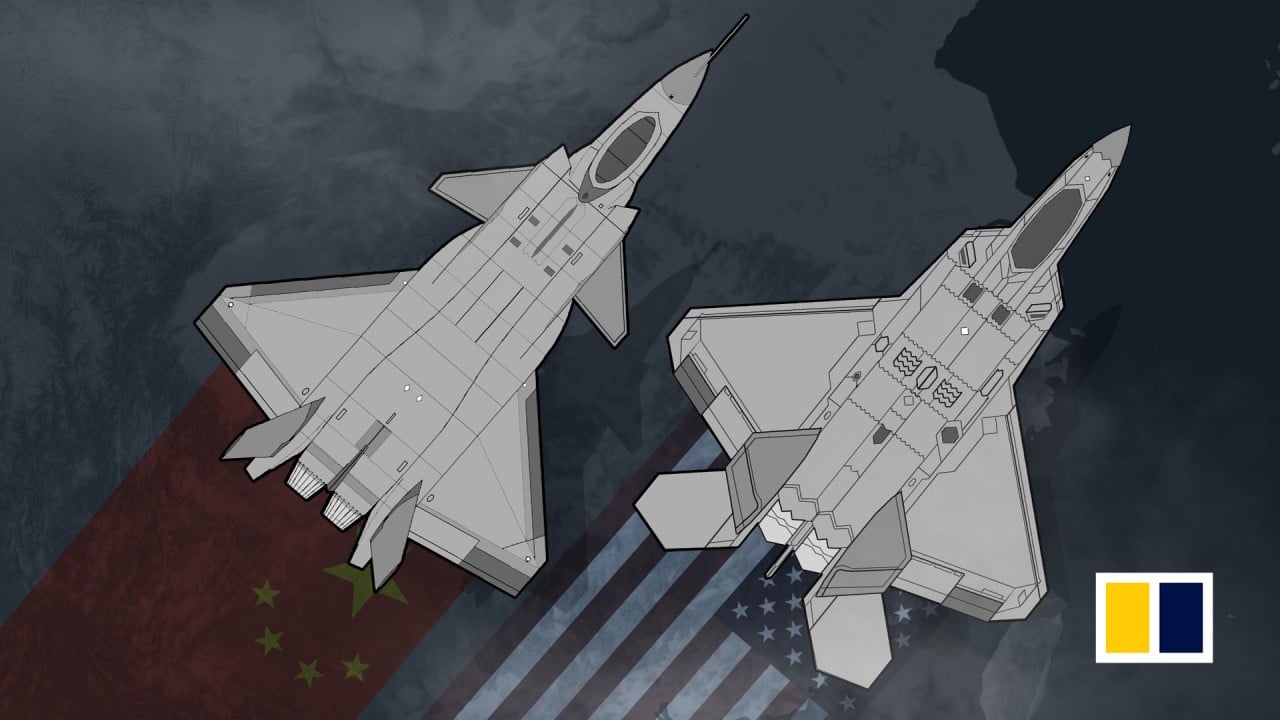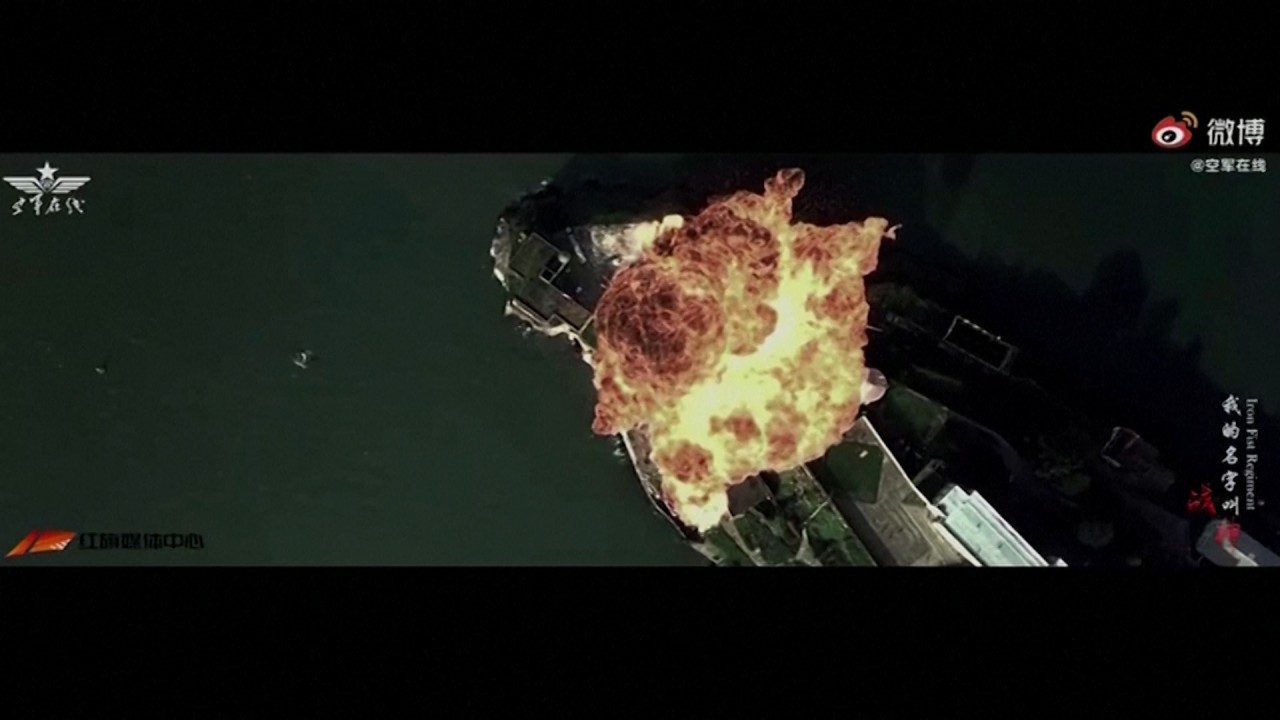
China’s air force unveils new twin-seat J-20 stealth fighter jet in video
- It shows the computer-generated warplanes flying in formation as a patriotic song is performed
- Analysts say variant that could accommodate two pilots would provide more offensive capabilities
China’s air force has revealed a new twin-seat version of its most advanced fighter jet in a music video marking 10 years since the J-20’s first flight.
Four of the computer-generated warplanes can be seen briefly flying in formation during the clip, which features three unidentified men performing a patriotic song about it being the air force’s time to conquer the skies and how it will defend every inch of China.
It is a variant of the J-20 Weilong, or Mighty Dragon – a single-seat, all-weather stealth fighter with precision strike capabilities that has featured in recent PLA shows of military might.
Developed by Chengdu Aerospace Corporation for the air force, it entered service in 2017 but has been dogged by engine problems.

01:48
Powerful Dragon v Raptor: how China’s J-20 stealth fighters compare with America’s F-22s
Military analysts said a variant that could accommodate two pilots would be a significant development for China’s air force.
Jon Grevatt, a warplane specialist and Asia-Pacific analyst at defence industry publisher Janes, said having two seats would provide a lot more offensive capabilities such as countermeasures and electronic warfare.
How China’s J-20 compares with US’ F-22
“The single-seat aircraft are generally smaller, quicker, very agile, usually for short range, designed for interception, escort and air-to-air capabilities,” Grevatt said.
“But a twin-seat aircraft is heavier, usually for multirole operation – not only air-to-air, but also air-to-ground – for longer range,” he said. “[They’re] usually used in a situation where two people work together, with one usually the pilot and another one behind him is usually like a weapon selector and operator and also handles electronic warfare equipment.”
He said developing a twin-seat variant of the J-20 would not be easy because it would need to be redesigned or modified. “It’s a technological challenge to produce,” Grevatt said.

00:49
Video of China's PLA ‘attack’ on Pacific airbase uses footage from Hollywood movies
Song Zhongping, a Hong Kong-based military commentator and former PLA instructor, said that with two seats, the J-20 could be used as a fighter bomber.
“An upgraded twin-seat J-20 could carry more offensive weapons and have stronger air-to-ground attack capabilities, so … it would become both a fighter and a bomber,” Song said.
Xi Jinping orders China’s military to be ready for war ‘at any second’
In November, the air force referred to the J-20 as the “backbone” of China’s air combat capability. It has not revealed how many J-20s it has, but the number has been estimated to be at least 50.
London-based think tank the Royal United Services Institute said in a paper in October that “subsequent developments [of the J-20] are likely to increase its low-observable characteristics and sensor capabilities”.

